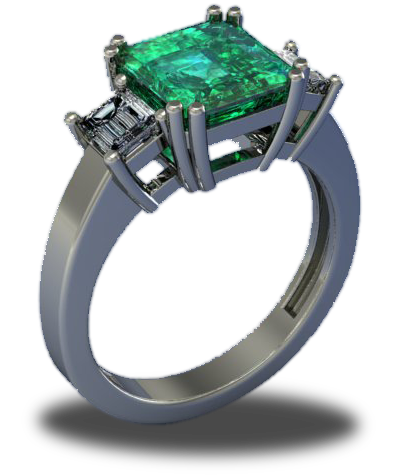Rich, Royal and Elegant Greens

Emeralds have been used in jewelry for thousands of years. They were highly sought after in ancient Egypt and Rome. Egypt was a major source of emerald until the Spanish conquistadors found emeralds in Columbia. Incas used emeralds as offerings to their gods, while other cultures believed them to be good luck and to have healing powers. Today, more money is spent on emerald imports than any other colored gemstone. Emerald is part of a group of stones known as beryl. Beryl comes in many colors. Blue beryl is known as aquamarine, pink beryl is morganite, and yellow beryl is heliodor. While these other forms of beryl are generally very “clean” most emeralds are included and contain numerous fractures and imperfections. An emerald of good color that contains few inclusions, fractures or imperfections can be even more valuable than diamond. Emerald is rated as 7.5-8 on the moh’s hardens scale. Although emerald is harder than gemstones like amethyst, tourmaline and most garnet, it has poor toughness meaning it is susceptible to chipping and breaking especially in an emerald ring. With an emerald ring it is important that the emerald is protected by the setting. Emeralds are commonly cut in a style known as the “emerald cut” which is rectangular or square with long parallel facets and cut corners. Cutting the corners helps to prevent the emerald from a corner chipping or breaking off. Emeralds are also cut this way to utilize as much of the rough emerald as possible.
